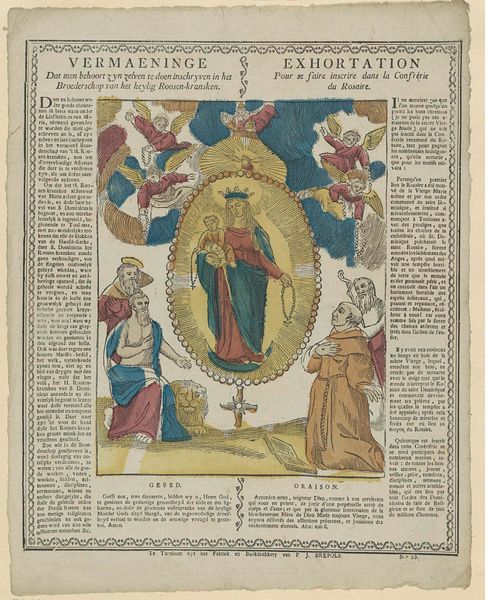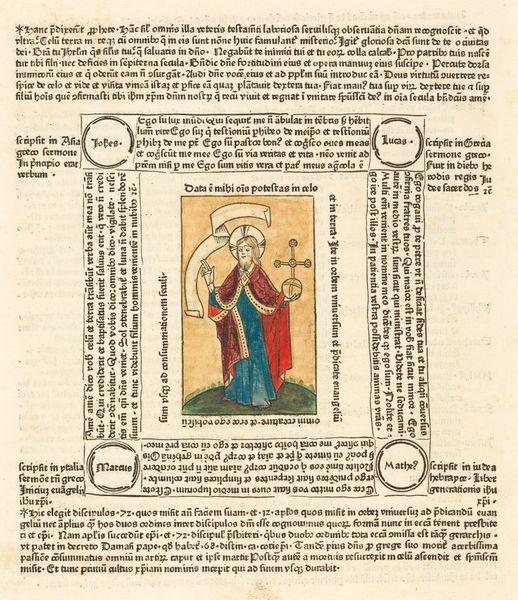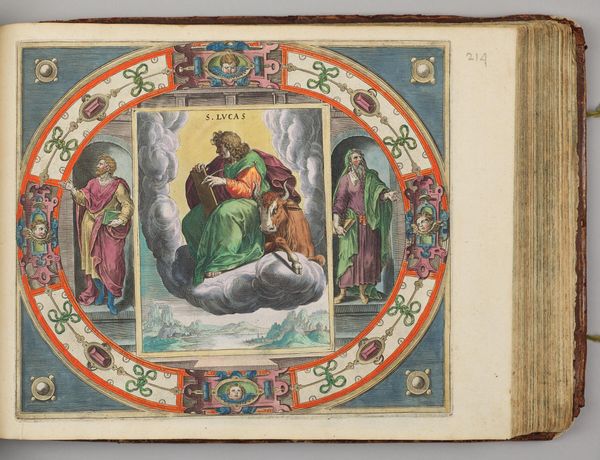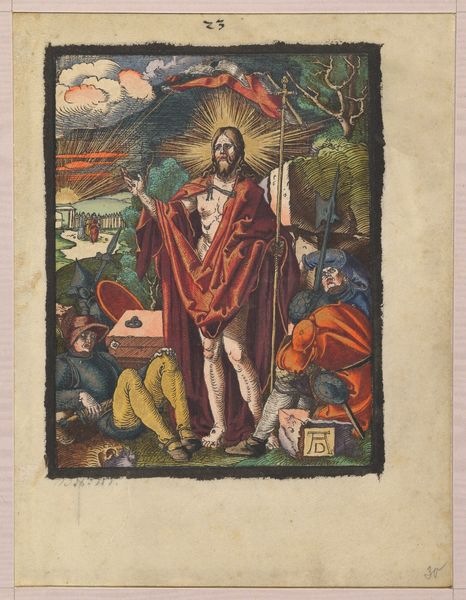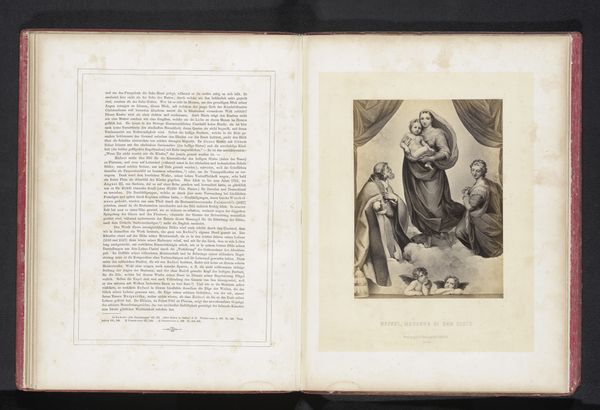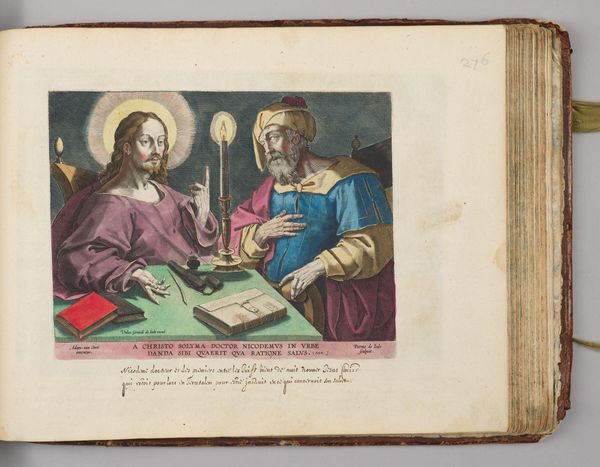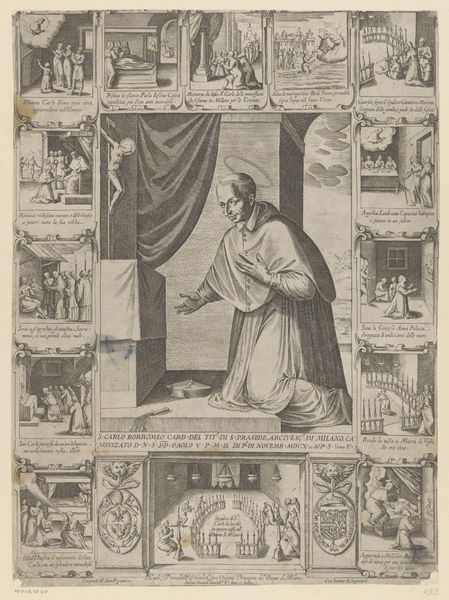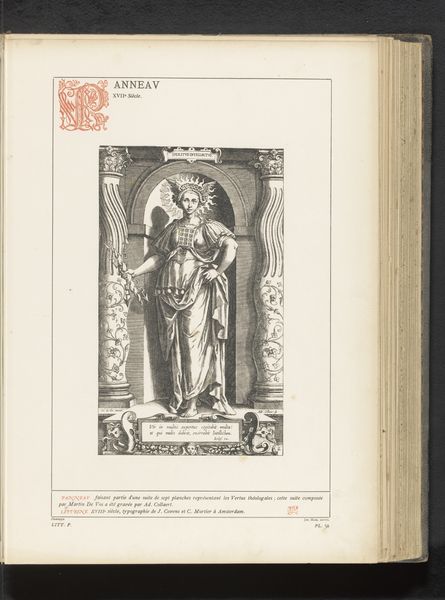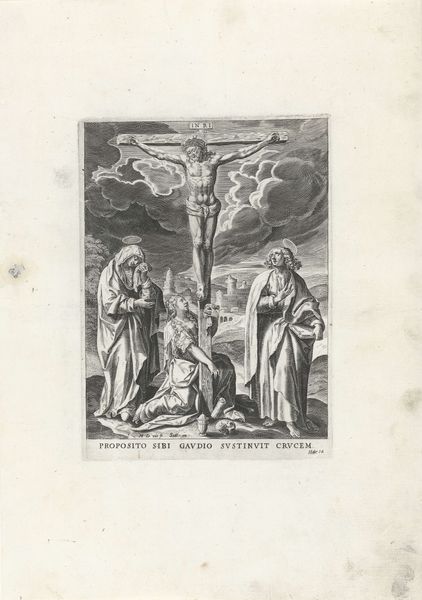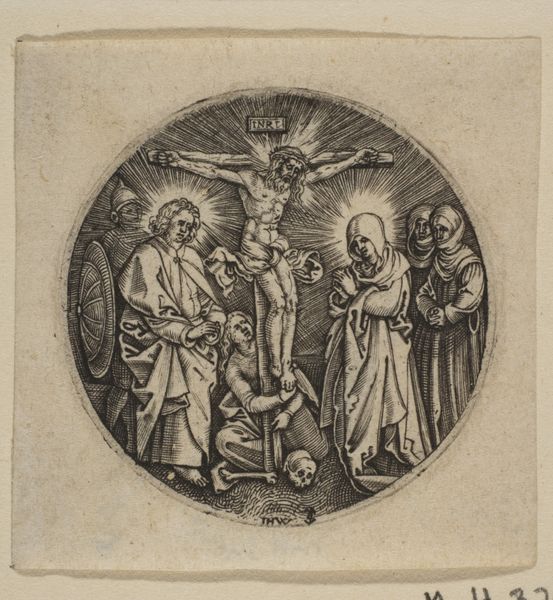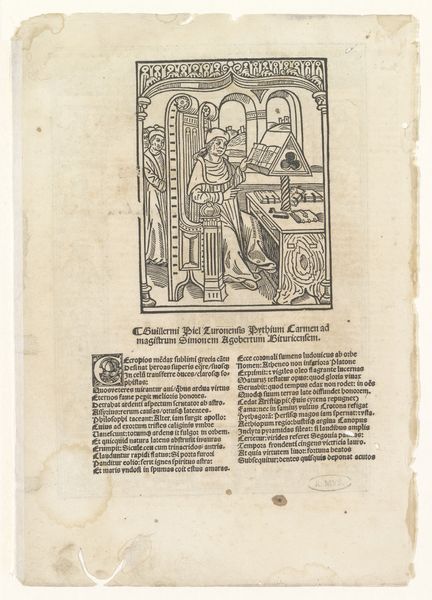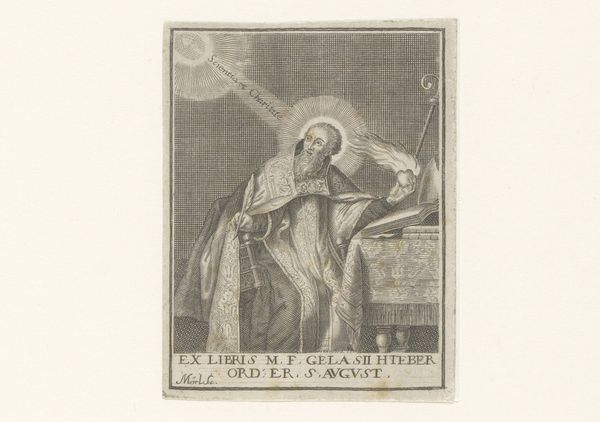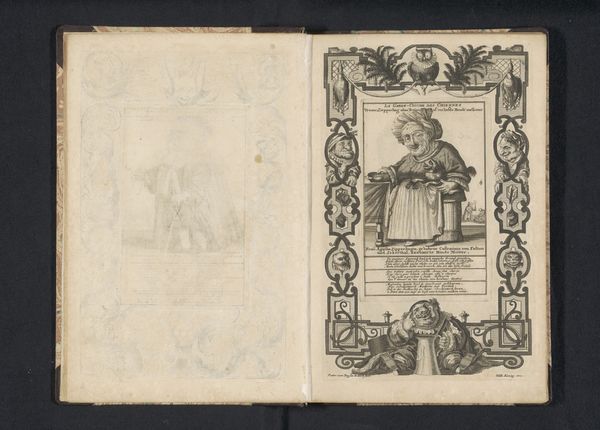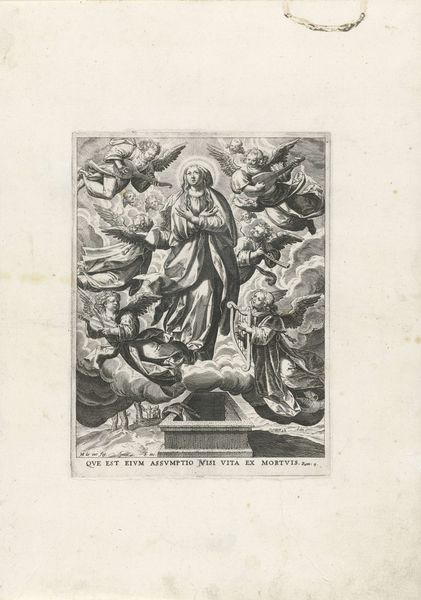
print, engraving
#
portrait
#
baroque
# print
#
figuration
#
history-painting
#
engraving
Dimensions: height 299 mm, width 345 mm
Copyright: Rijks Museum: Open Domain
Curator: This engraving, dating back to the period of 1665 to 1689, presents a rendition of "Christus als Salvator Mundi," created by an anonymous artist. What immediately strikes you about this printed image? Editor: Well, I am immediately taken by its peculiar structure—the radiant Christ figure is visually competing with what seems like the very lengthy accompanying text around the periphery of the frame. It gives the piece an imbalanced feeling. Curator: Indeed, the combination is rather distinctive. In terms of its composition, observe how the artist employs linear perspective, framing Christ within an arched architectural niche, drawing the eye toward his raised hand and benevolent gaze. How do you interpret the visual language at play? Editor: From a social perspective, such prints like this would have acted as vehicles for disseminating religious ideology to broader audiences beyond those with the economic resources for art. It democratizes the religious figure but does this dilute its emotive value in its distribution as mass print media? Curator: Potentially. But notice also the symbolism: He holds a sphere, signifying his dominion over the world. The interplay of light and shadow – achieved with some impressive refinement for this medium– contributes to a sense of otherworldly serenity. Editor: True, I can't shake the impression it gives off though: almost as if the religious figure is hemmed in and subdued by a political text or the written word. Didactic in ways, it leaves me to think that while portraying the salvation and grace of Christ, it, simultaneously perhaps unintentionally, reveals how religious symbolism and sentiments were appropriated into early modern media culture? Curator: It is true: religious symbolism can become easily repurposed in early-modern media contexts like that of print. This Baroque print offers a unique nexus where theological significance meets the evolving dynamics of visual communication, in a world just getting used to such media, which invites contemplation. Editor: Indeed, our exploration has uncovered a blend of sacred imagery and early print media and also shown how our lenses may change our reception. It serves as a tangible relic of a bygone era.
Comments
No comments
Be the first to comment and join the conversation on the ultimate creative platform.
